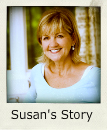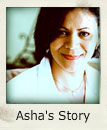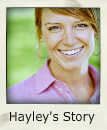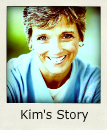I recently finished the book: “An Astronaut’s Guide To Life On Earth,” by Col. Chris Hadfield. I reserved it at the library (best invention ever) after listening to this interview with Col. Hadfield on NPR. It was cool to learn about all that astronauts go through before they go to space, and the stories about the logistics of zero gravity (going to the bathroom, preparing food, exercising) were entertaining. But what interested me about the book was a chapter Hadfield mentioned in the interview that describes the question all astronauts ask themselves, constantly, when they are in flight. The chapter is called “What’s The Next Thing That Could Kill Me.”
For astronauts, vigilance is the whole ball game. Hadfield says:
Half of the risk of a 6 month flight is in the first 9 minutes, so as a crew, how do you stay focused? How do you not get paralyzed by the fear of it? The way we do it is to break down what [the risks are]. And a nice way to keep reminding yourself is, “What’s the next thing that’s going to kill me?”
And it might be 5 seconds away, it might be an inadvertent engine shutdown, or it might be staging of the solid rockets coming off, or it might be some transition or some key next thing, [for example] “We’ve already had one computer fail, and we’ve had one hydraulic system fail, so if these three things fail now we need to react right away or we’re done.”
So we don’t just live with that, though. The thing that is really useful, I think out of all of this, is we dig into it so deeply and we look at, “Okay, so this might kill us, this is something that would normally panic us, let’s get ready, let’s think about it.” And we go into every excruciating detail of why that might affect what we’re doing and what we can do to resolve it and have a plan, and be comfortable with it.
According to Hadfield, as hard as it is to think about the risks in very vivid detail, this makes sense. If you know what the risks are, you have already begun the process of dealing with them. If you wait until the equipment fails to identify the risk, it is too late. NASA has manuals full of solutions to every conceivable problem. They’ve spent countless hours thinking about problems – and then formulating solutions. But there is no time to write the manual when the emergency is in progress.
Having a high-anxiety personality as I do means that my default mindset is one of defense.
Self-protection, low risk tolerance, safety first. This is where I live.
But I don’t want to exist like that. I don’t want to be always scanning the landscape, constantly alert for the worst-case scenario. I want to trust. To believe the best. To be present. To give the benefit of the doubt, and to move in grace for myself and others.
With all due respect to Col. Hadfield, I am choosing to not apply this particular lesson of space flight to my life. As much as I crave the security and constancy implied in living that question, as much as sinking into that consciousness feels like snuggling up in the warmest blanket, it’s no way to live. The blanket becomes a stifling straightjacket, effectively shutting down growth and progress. The cocoon of certainty suffocates. It doesn’t set me free.
I read Psalm 46:10 (“Be still and and know that I am God”) this morning, and that is the kind of peace and rest I seek now. Not the false confidence of predictability and control, but the assurance that God is doing what He does best- being God. To trust that it will all be okay. Trust that I’m being guided. To trust, against all odds and evidence, that I am safe.
Because, to paraphrase Nietzsche and then Kelly Clarkson, the next thing that doesn’t kill me may just make me stronger.
ARE YOU LEADING THE LIFE YOU WANT?











Leave a Reply